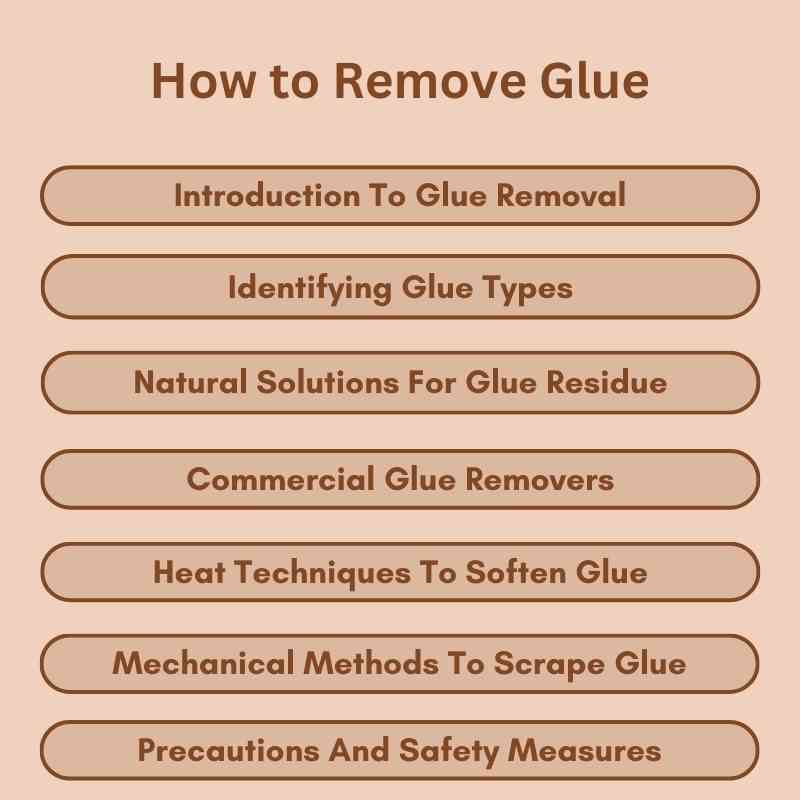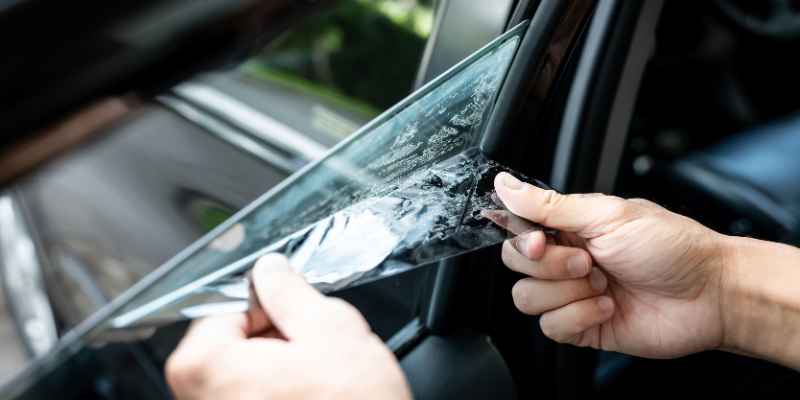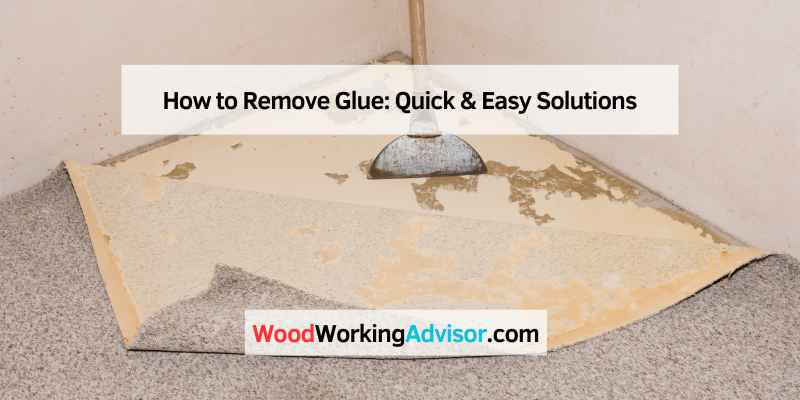To remove glue, use a solvent like acetone or rubbing alcohol. Apply the solvent to a cloth and gently rub the area until the glue lifts.
Glue can be a stubborn nuisance, whether it’s from a craft project or a stubborn label. Many people encounter sticky situations where adhesives linger on surfaces, creating frustration. Knowing how to effectively remove glue can save time and preserve the integrity of your belongings.
Various methods exist, from natural solutions to chemical agents, depending on the glue type and surface. This guide will explore effective techniques for different materials, ensuring you can tackle any adhesive challenge with confidence. Let’s dive into the best strategies for a glue-free finish, making your cleanup process easy and efficient.
Introduction To Glue Removal
Glue can create common mishaps in everyday tasks. Sticking items can lead to frustration. Removing glue requires careful techniques and tools. Knowing how to tackle glue issues can save time.
Preparation is key for effective cleanup. First, gather necessary items like a scraper and solvent. Choose the right solvent based on the glue type. Always test the solvent on a small area first. This prevents damage to surfaces.
Wearing gloves protects your hands from harsh chemicals. Ventilating the area helps avoid inhaling fumes. Keep paper towels nearby to wipe away excess glue easily. These steps make the process smoother and more efficient.
Identifying Glue Types
Water-based adhesives are easy to clean. They dissolve in water. Use a damp cloth to wipe away the glue. Warm soapy water can help too. For stubborn spots, try soaking the area.
Solvent-based adhesives are tougher to remove. These glues need special solvents. Look for products that contain acetone or alcohol. Apply a small amount on a cloth. Gently rub the glue until it comes off. Always test on a hidden spot first.
Natural Solutions For Glue Residue
Vinegar is a great way to remove glue. It works well on many surfaces. Soak a cloth in white vinegar. Gently rub the glue until it starts to lift. This may take a few minutes. Rinse the area with water after removing the glue.
Citrus-based removers are also effective. These products contain natural oils that break down glue. Apply a small amount to the glue. Let it sit for a few minutes. Wipe away with a clean cloth. Make sure to test on a hidden area first.
Commercial Glue Removers
Choosing the right commercial glue remover is crucial for effective results. Look for products that are safe for the surface you want to clean. Always read the label for specific instructions. Non-toxic options are available for home use.
For the best results, follow these application tips:
- Test on a small area first to avoid damage.
- Apply the remover generously and let it sit for a few minutes.
- Use a soft cloth or scraper to gently remove the glue.
- Wipe the area with a damp cloth to remove any residue.

Heat Techniques To Soften Glue
Using a hairdryer is an effective method to soften glue. Set the hairdryer to a low heat setting. Hold it a few inches away from the glue. Move it back and forth to avoid overheating. The heat will help loosen the adhesive. Once softened, gently scrape off the glue with a plastic scraper.
Ironing over cloth can also work well. Place a clean cloth over the glued area. Set the iron to a low heat and press it on the cloth. Keep the iron moving to prevent burns. The heat will transfer through the cloth, softening the glue. After a few seconds, remove the cloth and scrape off the glue.
Mechanical Methods To Scrape Glue
Plastic scrapers are safe for most surfaces. They do not scratch easily. Metal tools are effective but can damage some materials. Always test on a small area first.
Gentle abrasion techniques use items like fine sandpaper. This method removes glue without harming the surface. Use a light touch to avoid scratches. Rubbing too hard can cause damage.
| Tool Type | Pros | Cons |
|---|---|---|
| Plastic Scrapers | Safe on surfaces | Less effective on tough glue |
| Metal Tools | Strong and effective | Can scratch surfaces |
| Fine Sandpaper | Gentle and effective | Requires careful use |
Precautions And Safety Measures
Wearing the right protective gear is very important. Use gloves to protect your hands. Safety goggles will keep your eyes safe from harmful substances.
Make sure to wear a mask. This helps avoid inhaling toxic fumes. Always work in a well-ventilated area. Open windows and use fans to circulate air.
Consider using a respirator for extra protection. This is especially important for strong glue types. Keep children and pets away from your workspace.
Follow these safety measures for a safe experience. Always read labels on glue products. They will provide specific safety instructions.
Dealing With Specific Surfaces
To remove glue from fabric, first test a small area. Use a solvent like rubbing alcohol or vinegar. Apply it gently with a cloth. Blot the glue until it loosens. Wash the fabric as usual. For stubborn glue, use a commercial adhesive remover.
Cleaning glue off wood is simple. Use a scraper to gently lift the glue. For metal surfaces, apply warm soapy water. Let it sit for a few minutes. Wipe with a cloth to remove residue. Always test on a small area first.
Troubleshooting Stubborn Glue Spots
Removing stubborn glue spots can be tricky. Reapplying removal methods may help. Use warm soapy water to soften glue. Rubbing alcohol can also break down the adhesive. Try using a plastic scraper to lift the glue gently.
If these methods fail, consider using a commercial adhesive remover. Always follow the product’s instructions. Test on a small area first to avoid damage. If glue still won’t budge, it’s time to seek professional help.
Experts have the right tools and experience. They can safely remove glue without causing harm. Choosing to hire a professional can save time and effort.
Prevention And Maintenance Tips
Preventing glue spills is easier than cleaning them up. Store glue in a safe place. Use containers that are hard to tip over. Always keep caps on tightly. This reduces spills.
Regular cleaning helps too. Wipe surfaces with a damp cloth. Clean up small spills right away. Use a sponge for sticky spots. Make this a fun routine for kids.
Teach kids to be careful with glue. Show them how to use it correctly. Remind them to avoid overusing glue. This helps keep your home clean.

Frequently Asked Questions
How Do I Remove Glue From Surfaces?
To remove glue from surfaces, start by identifying the type of glue. Use the appropriate solvent, such as rubbing alcohol or vinegar. Apply the solvent to a cloth and gently rub the glue until it dissolves. Wipe the area clean with a damp cloth afterward.
What Household Items Can Remove Glue?
Several household items can effectively remove glue. Common options include vinegar, rubbing alcohol, and dish soap. You can also use cooking oil or peanut butter for stubborn glue. Always test a small area first to ensure the surface isn’t damaged.
Is It Safe To Use Acetone On All Surfaces?
Acetone is not safe for all surfaces. It can damage plastics, certain fabrics, and painted finishes. Always perform a spot test in an inconspicuous area before applying acetone. If safe, apply it sparingly with a cotton ball to dissolve the glue.
Can I Remove Glue Without Chemicals?
Yes, you can remove glue without chemicals. Use warm soapy water to soften the glue. Gently scrape it off with a plastic scraper or your fingernail. For stubborn spots, try using a hairdryer to heat the glue, making it easier to remove.
Conclusion
Removing glue doesn’t have to be a daunting task. With the right methods and tools, you can tackle stubborn adhesives effectively. Always test solutions on a small area first. Remember, patience is key. Following these steps will help restore surfaces and keep your projects looking pristine.
Happy crafting!

